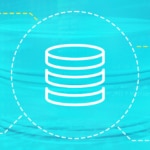The enterprise data warehouse (EDW) provides access to business data stored in a denormalized structure called a star schema, which makes it easy to analyze, visualize, and forecast essential business metrics. Business intelligence (BI) reporting makes use of the data warehouse for real-time self-service dashboards, custom visualizations, data marts, decision-making reports, and machine learning (ML).
A well-designed data warehouse or data lake can give end users and applications the ability to easily connect to critical business data—providing one source of truth in which to make decisions. However, data warehousing projects have typically required massive IT investments in hardware and a team of consults to build ETL and data models, leaving the IT organization to manage it without fully understanding it. This also meant having a data warehouse, and good BI was limited to organizations able to afford those investments.
Data warehouse automation allows organizations of all sizes to wrangle their data and perform data analytics with nicely summarized data sets, combining data from across their data platform into meaningful business intelligence.
Challenges in Traditional Data Warehouse Development
Traditionally, the lifecycle of data warehouse development involved the long, frustrating, expensive, and tedious methodologies of data scoping, modeling, transforming, design, testing, data quality acceptance, and deploying. It took highly trained technical SQL developers and experts in the business’s data working as a team to devise and code what they believed were the best data sources for the company.
This process can take many months to complete, and there’s been little standardization on how the process should be accomplished and what business rules should be applied from project to project. Beginning with gathering requirements to finally getting the data extracted, transformed, and loaded (ETL) into a useable data warehouse, the end result has sometimes been a costly disaster. While BI tools attempted to simplify this process, the wide variety of data sources and business rules make the process inherently challenging.

What Is Data Warehouse Automation?
Data warehouse automation (DWA) is accelerating and automating the data warehouse development cycles and reducing the time and error rate of traditional BI projects. DWA provides a way to efficiently address time-intensive, repetitive work in developing a data warehouse design project —including eliminating the need for hand coding. Using DWA tools, design patterns, and templates, developers can fast-track delivery, employing auto-generated data warehouse designs to meet the strategic needs of business users. This automation can introduce a new standardization of data discovery, development, testing, and change management, providing consistency from project to project.
Cloud providers have made this easier. Data Warehouse as a Service (DWaaS) vendors such as Snowflake and AWS Redshift offer industry-specific templates for your data while also offering storage and predefined schemas to help shape your data warehouse within the cloud. Data integration pipelines in Azure Synapse, for instance, give you hundreds of built-in connectors, making it easy to ingest different data sources.
Extensive project timelines can be significantly reduced by tapping into the straightforward data tools available within these ready-to-use platforms. Additionally, these services integrate into data management and data catalog services to maintain data quality over time. A good example is Microsoft Azure Purview.
How Does It Work?
Code Generation
Many data warehouse automation platforms generate code by using simple drag-and-drop interfaces, reducing to seconds the effort to produce background code for tasks normally taking hours of manual development. This provides developers the flexibility to rapidly make workload and design changes to accommodate any additional requirements as the project progresses, without timely delays.
Some challenges IT teams face are inconsistency in project development and loss of technical resources mid-project. Over time, requirements change. In traditional EDWs, this would mean someone, usually not the original developer, would have to take time to understand the existing code, determine where to make the changes, then make changes to the code. With DWA tools, changes made later in the EDW lifecycle are more easily integrated, with less of a learning curve when making changes to existing code.
Data Extraction
The advent of big data systems and their evolution into data lakes, along with the prevalence of Software as a Service (SaaS) business systems, means the BI developer faces an ever-growing variety of data sources. It’s no longer the simple option of an Oracle or SQL Server database. Modern DWA tools reduce the developer’s effort to extract data on the fly from various data sources with the click of a button, using hundreds of built-in APIs and connectors.
The software includes data-mapping functionality, simplifying the data integration effort for end users involved in the project to match up data from multiple business applications. DWA software packages typically include built-in metadata analyzers for reducing data redundancy, discrepancies, and errors usually encountered during the ETL phase of a data warehouse project. These tools act as a force multiplier, as traditional mapping exercises are extremely repetitive and time-consuming. DWA software speeds up this part of the project’s evolution.
Rules and Standards
DWA helps with this, enabling developers to set rules, standards, and methodologies easily produced from project to project. The addition of reusable templates also makes it straightforward to build a data model and meet regulatory compliance and data governance requirements for the business. You can also track and document data along with each step in the design process.
Tap Into Tools To Help
Once a business has its new enterprise data warehouse developed and in production, it’s important to monitor usage and optimize any performance issues to ensure a seamless buy-in by your end users. Be sure to look at available database insights and data warehouse monitoring tools. SolarWinds® Database Insights for SQL Server is designed to give a detailed view into your data warehouse environment to help you get more value from your cloud-based data warehouse investment.





